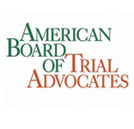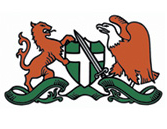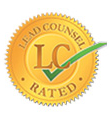A car accident throws your life into chaos, not just because of vehicle damage, but also due to physical injuries, emotional trauma, and ongoing financial burdens. Securing a fair settlement is vital for your well-being because it creates stability and lets you move forward after the accident. Knowing your rights alongside the potential value of your claim becomes important. A personal injury attorney will help you tackle the problematic aspects of California car accident claims as you seek the full settlement value you deserve.
Immediate Steps You Should Take at the Accident Scene
Your future claim will be heavily affected by your initial reactions during the critical moments following a car accident. A checklist of steps to take at the scene will keep you safe and preserve the evidence you need for later claims.
Safety must be your primary concern, so move vehicles to secure positions when they are safe, activate hazard lights, and deploy warning triangles if you have them available. You should then proceed to call 911 emergency services for assistance if:
- There are injuries
- The accident causes severe vehicle damage or
- Your car remains in the road's path
Once law enforcement arrives at the scene and takes note of the accident, you should secure a police report to obtain essential official documentation about the incident, which includes all vital details regarding:
- Date and time, alongside the location of the accident
- The parties involved, witness accounts, and
- The initial fault assessments
This report provides evidence for insurance claims and legal proceedings after a car crash.
Exchanging accurate accident details is essential at the scene of the crash for all involved drivers. You should collect the other driver's:
- Personal information, including full names and addresses, along with phone numbers
- Licenses and vehicle specifications
- Insurance policy data, specifically the company and policy number
You should also note the contact details of all witnesses who observed the incident. Record multiple videos and take several photos that show vehicle damage from various angles, as well as the vehicle positions, road conditions, traffic signs, any visible injuries, and related details.
Furthermore, you should avoid expressing guilt or apologizing casually during the accident scene. Stick to the facts. The two main mistakes at this stage include downplaying your injuries or expressing remorse by saying, “I’m sorry.” These statements can later be interpreted as accepting responsibility.
How to Protect Yourself After a Car Accident
You should do two vital things after recovering from a car accident shock:
- Seek medical help
- Follow proper accident reporting procedures
You should immediately visit a doctor after a car accident, regardless of your perceived health condition or minor injury symptoms. Adrenaline creates a temporary pain blocker that might delay detection of conditions like whiplash and internal injuries until hours or days later. A medical evaluation generates an official record of your injuries following the accident. It is critical because it serves as proof in healthcare and potential legal proceedings or insurance claims.
Remember to document all injuries sustained in a car accident with great care. Your medical care requires absolute adherence to the doctor's instructions and complete record-keeping of all medical treatments and diagnosis, including medications and therapy. Hold onto all medical invoices together with all receipts and prescriptions. The documentation will serve as crucial evidence about how severe and expensive your injuries were during the claims process.
You have reporting obligations along with seeking medical care. California law demands that drivers submit SR-1 accident reports to the DMV within ten days after an incident that caused death or any injuries and property damage exceeding $1,000. Your driving privilege will be suspended if you do not file the SR-1.
You must additionally inform your insurance provider about the accident. Check when your insurance policy requires reporting, but you must contact them immediately after an accident. Your communication with the insurer should consist of objective facts. Avoid speculation about liability or the severity of your injuries without medical evaluation. The DMV SR-1 is a mandatory report required by California law, but it does not govern all post-accident procedures.
The True Value of Your California Car Accident Case
California car accident settlement claims require understanding the potential value of your claim through identifying and calculating relevant car accident damages. As a car accident victim, if you suffer from another party’s negligence, you have legal rights to recover compensation for multiple forms of loss. Determining car accident settlement values requires combining the different forms of damages.
The court allows two main types of damages: economic and non-economic damages.
-
Economic Damages
The quantifiable monetary losses with an assigned dollar amount fall under the economic (special) damages category. These include:
- Medical bills — The compensation includes complete payment for past and future essential medical services. The costs of medical treatment, doctor appointments, surgical procedures, medications, rehabilitation services, and therapeutic care are some examples of economic damages. Medical records, along with bills, need to be properly documented for evidence purposes. You need medical expert testimony to project anticipated costs to obtain a settlement for future medical expenses.
- Lost wages — Recovery of earnings will compensate you for work-related income losses stemming from your inability to work because of injuries in the past and future. Your lost wages claim for the car accident will be supported through pay stubs, employment records, and an official letter from your employer. Expert testimony through vocational analysis is needed to determine loss of future earning capacity.
- Property damage — The expense of fixing damaged vehicles and the replacement value for personal property losses during the accident fall under property damage.
-
Non-Economic Damages
Non-economic (general) addresses significant life-quality losses that do not have a monetary valuation. Though these damages are harder to quantify, securing the maximum settlement after a car accident also requires including these non-economic damages:
- Pain and suffering — Physical pain, discomfort, and emotional distress are non-economic damages you can pursue after a car accident.
- Emotional distress — Mental anguish, together with anxiety, depression, and PTSD, emerges as one of the consequences that develop from the accident and subsequent injuries.
- Loss of enjoyment — Your participation in previous life activities, hobbies, and daily habits could be restricted due to the accident, and you can recover compensation for this.
- Disfigurement or scarring — This compensation addresses permanent physical alterations.
Calculating non-economic damages for pain and suffering relies on either multiplier methods applied to economic damages or per diem rate allocations. Still, the actual value remains subjective based on the extent and duration of injuries. The full extent of compensation available to victims becomes clearer when experts define legal terms with supporting examples and the authoritative basis for these claims.
Note: You can include punitive damages to maximize your settlement. However, punitive damages are not compensatory damages. They are awarded to punish the defendant.
The at-fault party alone does not determine eligibility. Under California Civil Code Section 3294, you need to show that the at-fault driver demonstrated oppressive, fraudulent, or malicious behavior. Their behavior surpassed typical negligent conduct to levels far beyond ordinary standards.
To prove malice in car accident cases, you must demonstrate intentionally harmful behavior that displays a complete disregard for the safety of others. Drivers who commit severe DUI offenses, engage in purposeful road attacks, or perform hit-and-run accidents that result in injury fall under this category.
Dealing With Insurance Adjusters After a Car Accident
In reporting your accident, you will inevitably work with insurance adjusters. Adjusters represent insurance companies that may have to pay your claim. They will attempt to settle claims at the lowest possible amount to close them as soon as possible. Your ability to handle interactions with insurance adjusters post-accident is the main factor for safeguarding your legal rights and settlement possibilities. It also determines how much you receive as a settlement for your injuries and losses.
The key to successful communication with adjusters requires being polite but firm. Share only solid evidence about the accident from your perspective. Avoid offering opinions, fault speculations, and detailed injury information extending past official medical documentation. When speaking with insurance adjusters, the most essential rule is never admitting fault or minimizing injuries.
The recorded statement obtained after car accidents poses a significant danger to claimants. The insurance company typically asks claimants to provide recorded statements at the beginning of the claims process. Deflect any requests for recorded statements from adjusters because you need to discuss the matter first with legal counsel. Adjusters typically obtain recorded statements for two main reasons:
- They look for contradictions and
- They try to extract statements that could damage your insurance claim
Insurance companies can turn your statements into evidence against your claim.
When negotiating with insurance adjusters, they will use various tactics to reduce payment amounts. Their approach includes presenting fast and minimal settlement amounts with the goal that you will accept because you are desperate or uninformed about your rights. The adjuster attempts to minimize your injury severity while pushing that your pre-existing medical conditions trigger your pain symptoms.
The successful response to these tactics depends on your organization. You must be prepared to present the complete set of evidence, which includes the police report, together with witness details, photographic proof, and a thorough record of medical treatments and expenses. A well-documented presentation of your case will establish its value and show its genuine nature to the court.
Eventually, you will likely present a formal demand letter for the car accident. This letter outlines:
- The facts of the accident
- Details your injuries and losses (damages), and
- The amount of compensation you are seeking, supported by the evidence you have gathered
Crafting a strong demand letter is critical in setting the stage for serious negotiation. Adjusters often try to settle claims quickly and cheaply. Seeking trustworthy legal advice on organizing evidence and being wary of quick offers helps protect your rights and potential compensation.
Effective Negotiation Strategies to Maximize Your Offer
Establishing a car accident settlement demands careful planning with patience and strategic dialogue. Assessing your total damages (economic and non-economic) enables you to establish a proper range for car accident settlement negotiations. Settlement negotiations should consist of:
- Amounts that are apparent from documented losses
- The severity of injuries and clarity of fault
- Consideration of possible future consequences
A car accident settlement calculator will provide an estimate, but keep in mind its constraints because it cannot address the individual circumstances of your case or the personal nature of non-economic damages. Therefore, it should only be used as a basic reference tool.
After sending your demand letter, the negotiation process begins, and you will likely encounter a low settlement offer from the insurance company at first. Your response to this offer should be strategic because immediate acceptance is only advisable if the offer satisfies all your needs. Clarify the reasons behind the offer's inadequacy and include supporting documents if needed.
To establish a counteroffer insurance settlement, you require proof and a detailed process for calculating your figure. Your response should demonstrate how your injuries will affect you in the long term, all medical requirements, and the intensity of your suffering. Prepare to face multiple counteroffers. The negotiation process advances toward a just figure using successive offers and counteroffers.
Making a strategic decision involves understanding which times require holding firm on your demands versus seeking compromise opportunities. The need for litigation becomes apparent when negotiations stall significantly or when the insurance company makes an unreasonably low final settlement offer following the car accident. Insurance responses to demand letters come within a few weeks to one month. Expert negotiation guidance and an emphasis on evidence-focused argument give you the strength needed for this fundamental phase.
Knowing When to Hire a California Accident Attorney
The timing of hiring a lawyer after a car accident proves essential because it determines the outcome of your claim. You can handle simple claims without legal help. However, several clear warning signs show that professional legal representation would help you secure your maximum settlement and defend your rights.
Consider hiring an attorney if:
- Your serious injuries need comprehensive medical care that has resulted in significant medical expenses and wage loss, and may result in long-term medical needs.
- The other party and their insurance provider argue that you bear full or partial responsibility for the accident.
- The insurance provider becomes uncooperative by extending the settlement process and providing offers that seem too small.
- The case involves complicated liability matters and multiple involved parties, including commercial vehicles.
- Your accumulated damages are serious because they include substantial pain and suffering components and diminished capacity to earn income.
Your decision to hire an accident lawyer offers many advantages because they fully understand legal procedures and know how to investigate accidents and collect important evidence while properly evaluating all possible compensation, including future damages you might overlook. Insurance adjusters cannot push through aggressive tactics if your attorney has sufficient negotiation capabilities and is ready to proceed to trial when settlement negotiations fail.
Most personal injury lawyers work on a contingency fee basis. Their payment comes solely from winning your case through settlements or court verdicts. They receive payment as a percentage of the total compensation you receive. Victims without current financial resources can secure assistance from expert legal professionals through this structure. A free consultation with a personal injury lawyer is an initial step to finding the best car accident lawyer, as you receive case information and options at no cost during this meeting.
Key California Laws Affecting Settlement
Anyone looking for a fair settlement needs to understand specific laws in California regarding car accidents because the statute of limitations and the comparative fault rule directly affect your claim value.
According to the statute of limitations, you must submit your personal injury court case within a defined period. By California law, the time limit for most claims related to personal injuries from car accidents is two years starting from the day of the accident. The time limit to file property damage claims is usually three years. The failure to meet your deadline results in losing your right to sue, which makes settlement talks much more challenging. Knowing all deadlines regarding legal action becomes essential since certain conditions may extend or shorten these time limits.
California applies the pure comparative negligence doctrine. Your ability to secure compensation from the other party is possible despite your responsibility for the accident. The court will reduce your compensation amount by your percentage of fault in the accident. For example, if the jury’s verdict awards you $10,000 and assigns 20% fault to you, your award will be reduced by 20%. Thus, you will receive $8,000.
Notably, auto insurance coverage in California operates under specific mandatory requirements. The established minimum coverage amounts for bodily injury per person, bodily injury per accident, and property damage are $15,000, $30,000, and $5,000. The low insurance limits make at-fault drivers prone to being underinsured, which prevents them from fully compensating victims for their damages. Having uninsured motorist coverage (UM/UIM) as part of your policy becomes essential because it pays compensation when the driver responsible for your accident lacks insurance or has insufficient coverage.
Find a Personal Injury Attorney Near Me
The process of seeking maximum compensation after a car accident is difficult, but it is worth pursuing since it protects your future financial well-being. Accepting an insurance company’s first offer will make receiving your complete loss compensation impossible.
The path to maximizing your compensation from your car accident claim requires you to take active steps by recording evidence thoroughly, assessing your actual losses, managing your communications, and applying California laws effectively. The fear of confusion and intimidation should not stop you from pursuing proper compensation for your case.
After a car crash, you should protect your rights. The next steps of your car accident claim and final settlement advice will be more effective when you seek professional legal representation for complex situations and stubborn insurers. Maximize your compensation today by contacting the Los Angeles Car Accident Attorney at 424-237-3600. We offer free initial guidance for your situation and explain our approach to secure you the maximum possible settlement.






